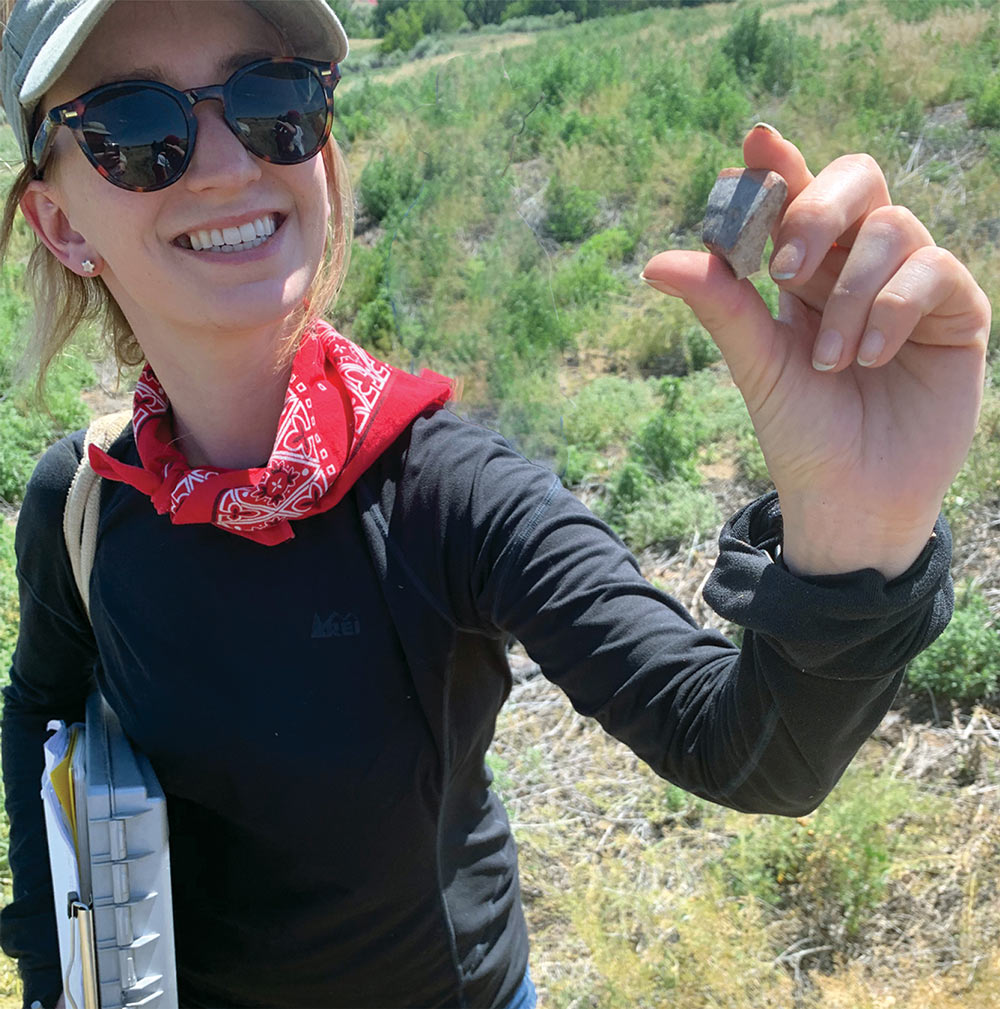Hooked on History
or Genevieve Woodhead ’12, an archaeology Ph.D. candidate at the University of New Mexico, pottery bears witness to the ways different groups have coexisted across time.
“Ceramics leave a trace of interpersonal interaction,” says Woodhead. In addition to using pottery for cooking, serving, and storage for thousands of years, people have used ceramics “to encode their practices, connect with others, and express artistic qualities.”

It is still unclear how the stylistic change emerged. To what extent, Woodhead wondered, was it a result of newcomers interacting with their hosts? Did the arrivals work alone, or together with the Canyon’s locals?
A history major and an art history minor, her time as an undergraduate shaped her current interests. Her research on ancestral Pueblo pottery fuses elements of both fields.
Growing up, Woodhead had never really thought about ceramics.
“I was a paintings person,” she says. That changed when she was assigned to write about a seventh-century Chinese figurine in the Philadelphia Museum of Art in Professor Tomoko Sakomura’s East Asian Art course.
Woodhead quickly saw how ceramics were a powerful compound of the functional and the artistic, and could illuminate long-buried histories. She became hooked on the history of the Southwest after a class with Professor of History Bruce Dorsey, where she heard about the Pueblo Revolt for the first time — the successful uprising against Spanish colonizers in 1680. “I thought I’d had a really good education,” she says, “but there were things that were clearly missing.”
Now, Woodhead uses ceramics to unearth that region’s history.
“The big question,” says Woodhead, “is how do craftspeople respond to an influx of newcomers with different practices? That’s relevant to different fields.”
Woodhead is gathering data to answer the question, which is driving her thesis. While her work is mainly statistical, her continual fascination with the physical processes of pottery-making, and what they can tell us about human culture, sustains her. Ceramics have been made by people across the globe, in many cases independently of each other.
“People all over the world,” says Woodhead, “have discovered that clay has this property: that it can be plastic and then, when you fire it, it’s now hard. That’s really interesting.”